What is Uveitis?
Uveitis refers to the inflammation inside the eye that can affect the uvea. The uvea is a round and soft tissue, a middle layer of the eyeball, that supplies blood to the retina. "uvea" is named for its grape-like color. If the eye is compared to a camera, the uvea is equivalent to a darkroom, which contains rich pigments and plays a role in blocking light.
Uveitis is a complex disease caused by a variety of reasons, such as infection, autoimmune factors, genetic disease trauma, etc. Common symptoms include redness, pain, blurred vision, and shadowy visual obstructions, and it may progress to cataracts, glaucoma, retinal detachment, or complete vision loss. Imagine not being able to keep your eyes open under bright lights or feeling discomfort all the time when trying to focus on something. Living with uveitis can be challenging as it can interfere with daily activities such as driving, reading, or even working on the computer.
Uveitis Traditional Treatment and Limitations
Standard treatments for uveitis encompass eye drops, injectables, and medications. Indeed, anti-inflammatory drugs help in controlling the condition. However, long-term corticosteroid use can lead to chronic side effects, including medication-related increases in eye pressure, leading to glaucoma and progressively increasing cataracts. Additionally, systemic side effects may include weight gain and reduced bone density. Some cases of uveitis require more powerful immunosuppressive medications to keep the inflammation under control. The limitations of conventional treatments have spurred the search for alternative or complementary therapies. One such alternative therapy that is gaining much attention is red light therapy (RLT). But what exactly does this involve?

Introducing Red Light Therapy
In simple terms, RLT is the process of exposing the body to low levels of red or near-infrared light. In contrast to the harmful effects of ultraviolet light, red light is deemed safe and beneficial for health. It can easily travel through the skin and deeper into tissue, triggering healing by activating mitochondria. It has anti-inflammatory effects, enhances regeneration, and relieves pain.
Though RLT is not new and has been used in many medical disciplines for the healing of wounds, pain management, and skin conditions, its application for problems related to the conditions of the eyes, such as uveitis is under research. By diminishing eye inflammation, RLT could lessen uveitis symptoms and enable patients to deal with their problems better.
Potential Benefits for Uveitis
Let's understand how RLT can benefit us if one has uveitis.
- Decreased Inflammation in the Eye: Inflammation is the core of uveitis, causing pain, redness, and issues related to vision. RLT, in this situation, targets inflammation so that the eye will be calmer without discomfort related to redness. Easing this constant irritation could restore normalcy to everyday activities.
- Accelerates healing: Flares of uveitis are potentially damaging to the eye if untreated. Therefore, RLT, by facilitating healing, may offer improved outcomes during flares, mitigating the risk of long-term damage and maintaining vision.
- Reduced Use of Drugs: RLT is not actually a substitute for conventional treatment but can supplement its effect. RLT could potentially reduce long-term medication, such as high dosages of corticosteroids, and minimize side effects.
Red Light Therapy Application for Uveitis
A variety of RLT devices, including panels, masks, and handheld units, are able to be utilized for eye therapy. These devices emit red or near-infrared light, which can then be directed to the eyes. Keep in mind that the eye is a very delicate organ, so RLT should be done carefully.
- Panels: Large devices designed to treat multiple body areas simultaneously. They are usually used to treat a whole body, but they could be placed to focus light on the eyes.
- Masks: These wearable devices enable direct delivery of red light therapy to the facial and eye regions. These devices have been used mainly for skin treatment and can benefit the treatment of eye conditions.
- Handheld devices: Compact and portable, these units can be directed toward the eyes or other specific body areas. They offer much flexibility regarding where and how the therapy is applied.

Treatment Protocol
Initiating therapy with low intensity and tracking progress under medical supervision is crucial due to the eye's sensitivity. RLT for treating uveitis is generally performed in sessions of 5-20 minutes; a patient does this daily or every other day during the first 4-8 weeks. Later on, as inflammation stabilizes, the frequency may be reduced to 2-3 times weekly.
Important Considerations
Even though RLT seems to be promising as a treatment modality in uveitis, a few caveats have to be borne in mind:
RLT Is Not a Cure: It's crucial to recognize that RLT doesn't address the root causes of uveitis but may help manage its symptoms and reduce flare-ups.
Consult a Doctor: Always consult a healthcare provider before undergoing RLT. Only a doctor is competent enough to decide whether RLT can be applied to your specific condition and how that can be safe.
Research Is Underway: While preliminary reports indicate the results of RLT for uveitis may be promising, more research still needs to establish this.
Conclusion
Red light therapy is an exciting potential adjunct treatment for uveitis. RLT not only aims to lessen inflammation and encourage healing but may also diminish the dependence on conventional medications. It is critical to mention that RLT alone is not a panacea and can be used in conjunction with other conventional treatments under the supervision of an attending doctor. For individuals with uveitis, red light therapy could serve as a beneficial instrument to improve eye health and enhance quality of life.
References
1. de Smet, Marc D et al. "Understanding uveitis: the impact of research on visual outcomes." Progress in retinal and eye research vol. 30,6 (2011): 452-70. https://pubmed.ncbi.nlm.nih.gov/21807112/
2. Park, Yuli et al. "Effect of low-level light therapy in patients with dry eye: a prospective, randomized, observer-masked trial." Scientific reports vol. 12,1 3575. 4 Mar. 2022, https://www.ncbi.nlm.nih.gov/pmc/articles/PMC8897458/
3. Zhang, Chun-Xia et al. "Considerations for the Use of Photobiomodulation in the Treatment of Retinal Diseases." Biomolecules vol. 12,12 1811. 3 Dec. 2022, https://www.ncbi.nlm.nih.gov/pmc/articles/PMC9775242/



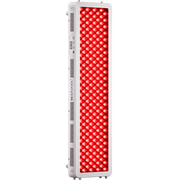









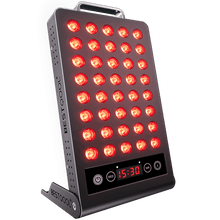
 Small
Small
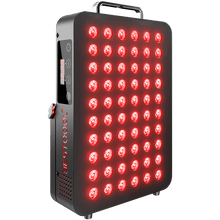
 Moderate
Moderate
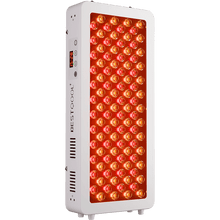
 Moderate
Moderate
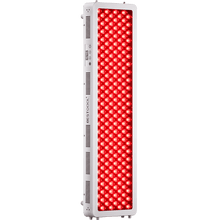
 Moderate
Moderate
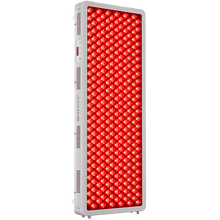
 Full
Full



